Content:
Garden owners treat their plots not only as a means of obtaining food. For many, this is an opportunity to show their design skills by planting not only fruit, but also ornamental plants. Choosing to decorate a summer cottage among conifers, sometimes people think about what to prefer, and how the thuja differs from the juniper.
Thuja and juniper
Both conifers belong to the same family - Cypress, therefore they are very similar in appearance. It's this similarity that confuses inexperienced designers. But if you look closely at the needles, then in adult plants they can differ. In the juniper, the leaves remain needle-shaped, but in the thuja, they change with age, turning into scaly.
The shape of the crown is also difficult at first glance to figure out where the junipers and thuja are - both members of the family can be cypress-shaped or spherical. Among these plants, there are varieties: from indoor to park.
All Cypress trees are among the oldest representatives of the earth's flora. Shrubs and trees have a long lifespan, estimated in centuries. Therefore, beautiful plants are so often used in landscape design.
Cypress are also valued for their healing aroma. Where these trees grow, the air is particularly clean. Conifers are valued for their useful composition, which is almost identical in junipers, thuja, cypresses.
Distinctive features
Despite the external similarity, there are differences between the representatives of conifers. Knowing the biological characteristics of plants, it is easier to navigate in the choice of this or that tree, bush.
Thuja
Arboreal thuja grows rapidly, sometimes reaching a height of 70 m with a girth of 6 m in diameter. But most often in garden plots you can find pyramidal or spreading shrubs, up to 7 m high, with branches located in the same plane. This variety is called western thuja. It is cultivated in any conditions, but, despite its frost resistance, it does not take root in the Far North.
The trunk of the thuja is smooth, usually gray. By old age, the bark becomes longitudinally fibrous and flakes off in narrow ribbons. Scaly small needles are tightly pressed against each other. On short branches, oblong (7-12 mm) cones bent to the bottom are formed. They usually contain 2 seeds.
Thuja blooms from April to May. From June to September, fresh branches can be harvested for medicinal purposes.
Each element of the plant contains useful components:
- in needles - resins, essential oils with a pleasant smell and a yellow tint (thujone, cinene, cardiophyllene, pinin, etc.); tannins and flavonoids;
- in seeds - essential oils in high concentration;
- in wood - toxifollin, aromadendrin.
Thuja preparations are used in homeopathy, oriental medicine. Domestic healers introduce it into recipes for the treatment of cystitis, prostate, rheumatism, urinary incontinence. Thuja is recommended for worms, papillomas, warts. Coniferous products help dissolve scars and neoplasms. Infusions cleanse and whiten the skin, treat inflammation in the hair follicles.
Juniper
The first difference between thuja and juniper is that the latter is much shorter. Trees reach an average of 3 meters, although individuals are found 5 times higher.There are also low-growing shrubs, almost creeping along the ground. It is by them that you can distinguish a juniper - such individuals are not found in thuja.
The flowers are dioecious, axillary and differ from each other:
- men resemble earrings;
- female - these are globular bumps.
Juniper blooms in May, and begins to bear fruit in October-November of the next year, giving a fleshy cone berry. It is small, with a bluish bloom, inside contains 3 seeds. Most varieties have edible fruits.
In the wild, juniper is found not only in pine forests, but also in mixed forests, along the slopes of mountains, dry hills, near rivers and sometimes in moss bogs. It is cultivated everywhere in Russia.
In decorative design, the plant has been used for a long time; the ancient Egyptians, Romans, Greeks used juniper as a medicinal raw material.
The plant really has a very powerful composition:
- in fruits - up to 40% sugars, 10% resins, 2% essential oils; contains acids (formic, acetic, malic), vitamin C, camphor;
- needles are rich in ascorbic and rhodionic acids, which provide a powerful bactericidal effect.
This property is the main distinguishing feature of the essential oils of juniper, with which no other plant can be compared.
The healing smell is one of the factors stimulating to plant this plant in your area. There is no field of medicine in which the juniper berry does not give an effect. It is used fresh, dried, made medicinal tinctures, decoctions, syrups. A small bottle of essential oil can be purchased at a pharmacy. In the food industry, fruits are used as a spice in the production of vodkas and liqueurs.
Landing features
In Cypress, growing conditions are almost the same.
Regardless of the shape of the crown, the height of the thuja cypress juniper plant are planted taking into account the same requirements:
- seedlings are purchased exclusively with an earthen clod so that the roots do not dry out, otherwise the plant will disappear;
- before planting in a hole, an earthen lump must be watered;
- the landing pit is made larger in diameter and depth than the size of the coma - a man's palm should be placed between it and the earthen wall;
- installing the plant in a recess, they try to keep the root collar at ground level;
- the air gaps in the pit are covered with a special soil mixture (see table below).
Each plant will do well if it is planted according to the requirements of the species.
Individual requirements of Cypress
| Landing features | Thuja | Juniper |
|---|---|---|
| Seat selection | Both sunny and semi-shaded areas | Open, sunny areas |
| Backfill soil in the pit | Sand, peat, leaf (sod) land - 1: 1: 2 | Sand, turf, peat (1: 1: 2) * |
| Drainage | Broken brick interspersed with sand, a layer of 15-20 cm | |
| Planting depth | 60-80 cm | 70 cm (with padding) |
* When choosing soil mixture for junipers, varietal characteristics are taken into account:
- the Siberian prefers sandstones;
- Cossack - calcareous soil;
- virginian - clayey.
Care
In the process of growing thuja and juniper, there is no particular difference. Both representatives of Cypress need watering in the absence of rainfall for a long time - at least 5 liters of water are needed for each plant.
They feed trees and shrubs once a year, in spring. During loosening, a complex fertilizer is applied to the soil. They regularly monitor that the surface layer of the earth is not covered with a hard crust.Conifers need weeding only the first 2-3 years after planting.
As for pruning, only sanitary ones are required, which are carried out as needed in the fall or spring. There are no schemes for regulating fruiting, even for junipers. The formation of the crown is carried out exclusively for decorative purposes.
What is better to plant on the site
Both representatives of the family fit perfectly into the landscape of any site. Therefore, the difference is small, what to choose if there are no special requirements. It is better to pay more attention to the selection of a place, given the size of an adult plant.
It is also worth knowing that thujas develop rapidly and live for about 100 years. Junipers, on the other hand, grow very slowly and are real long-livers - their average age is 500 years.
Possessing healing properties, both varieties will be appropriate in the garden. But the juniper is more profitable in the sense that it is also a good fruiting with edible berries. But thuja seedlings are cheaper, and it is more profitable to buy them for a hedge.
A few words about design
Having figured out how to properly plant the thuja boxwood and juniper on the site, they decide the following question: for what purpose is this done. If thuja is used as green spaces along the perimeter of the territory, then the juniper is planted either in small groups or singly. The flower arrangement of the alpine slide looks great, where the creeping juniper bush takes the central place.
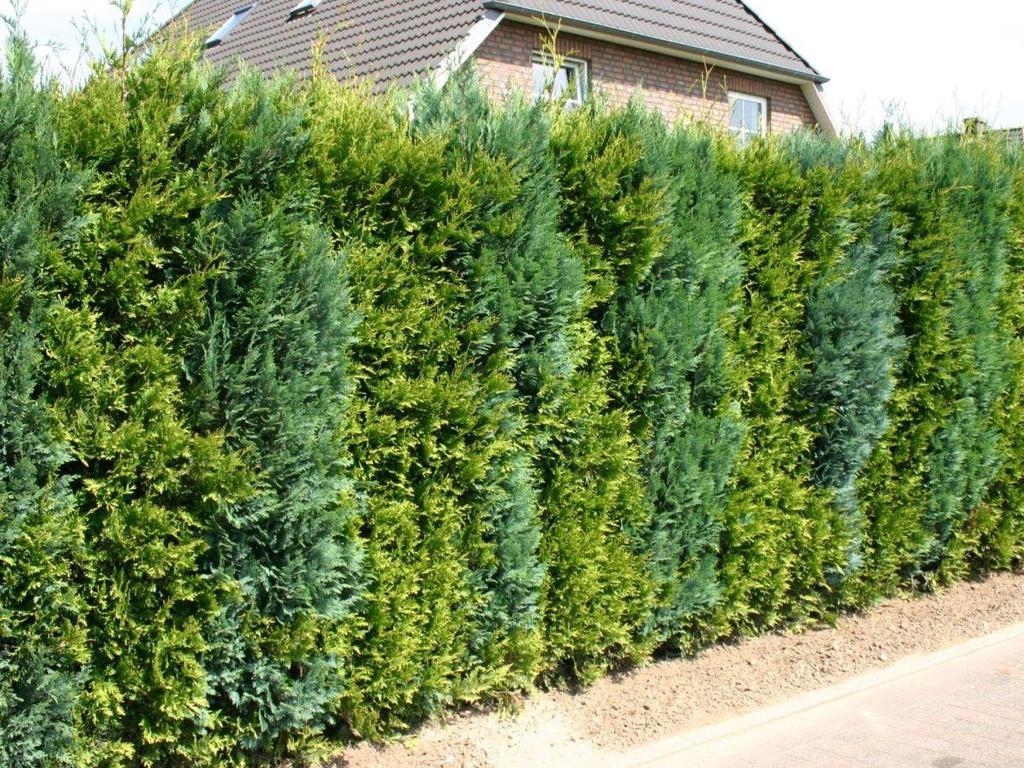
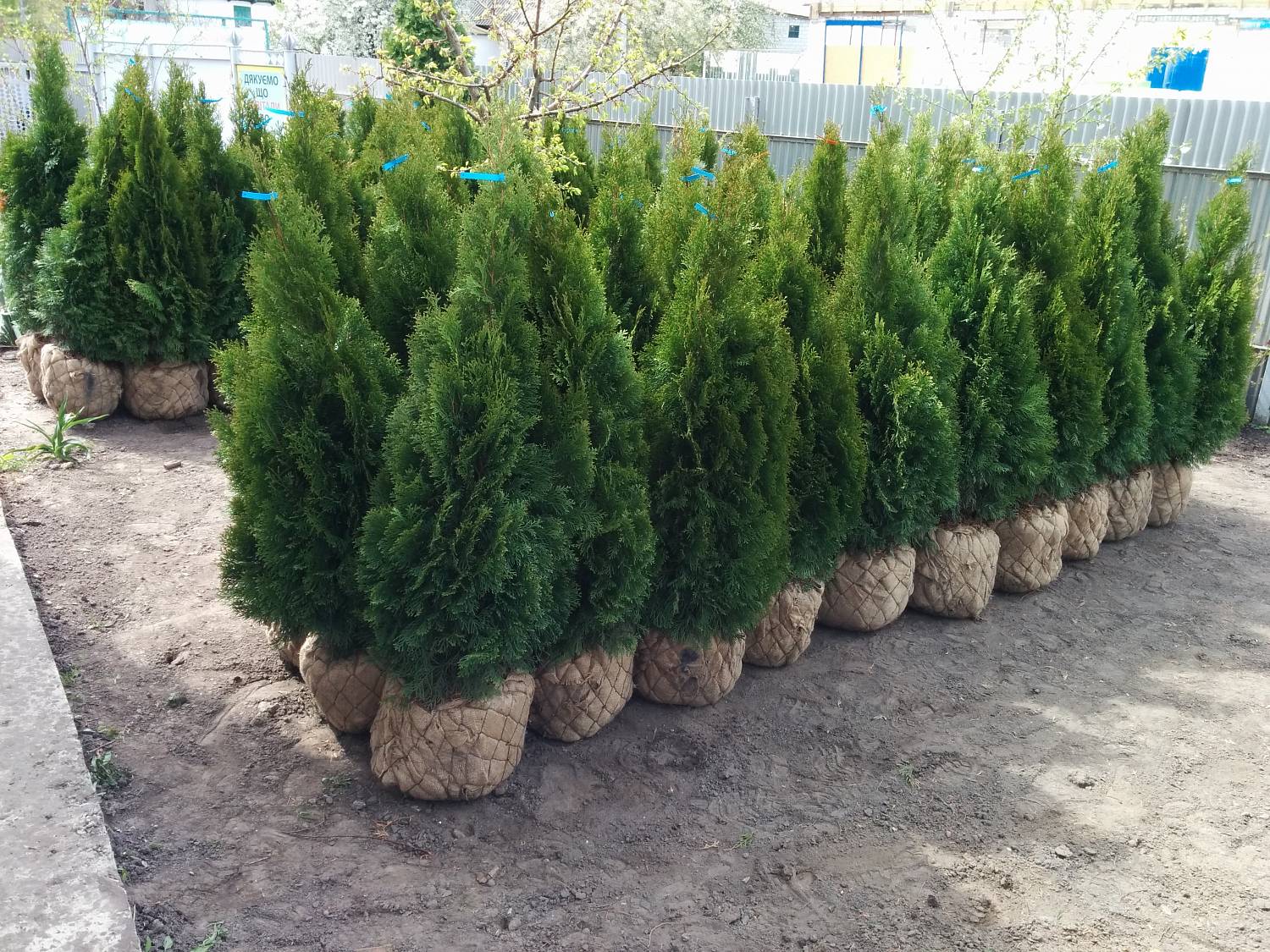
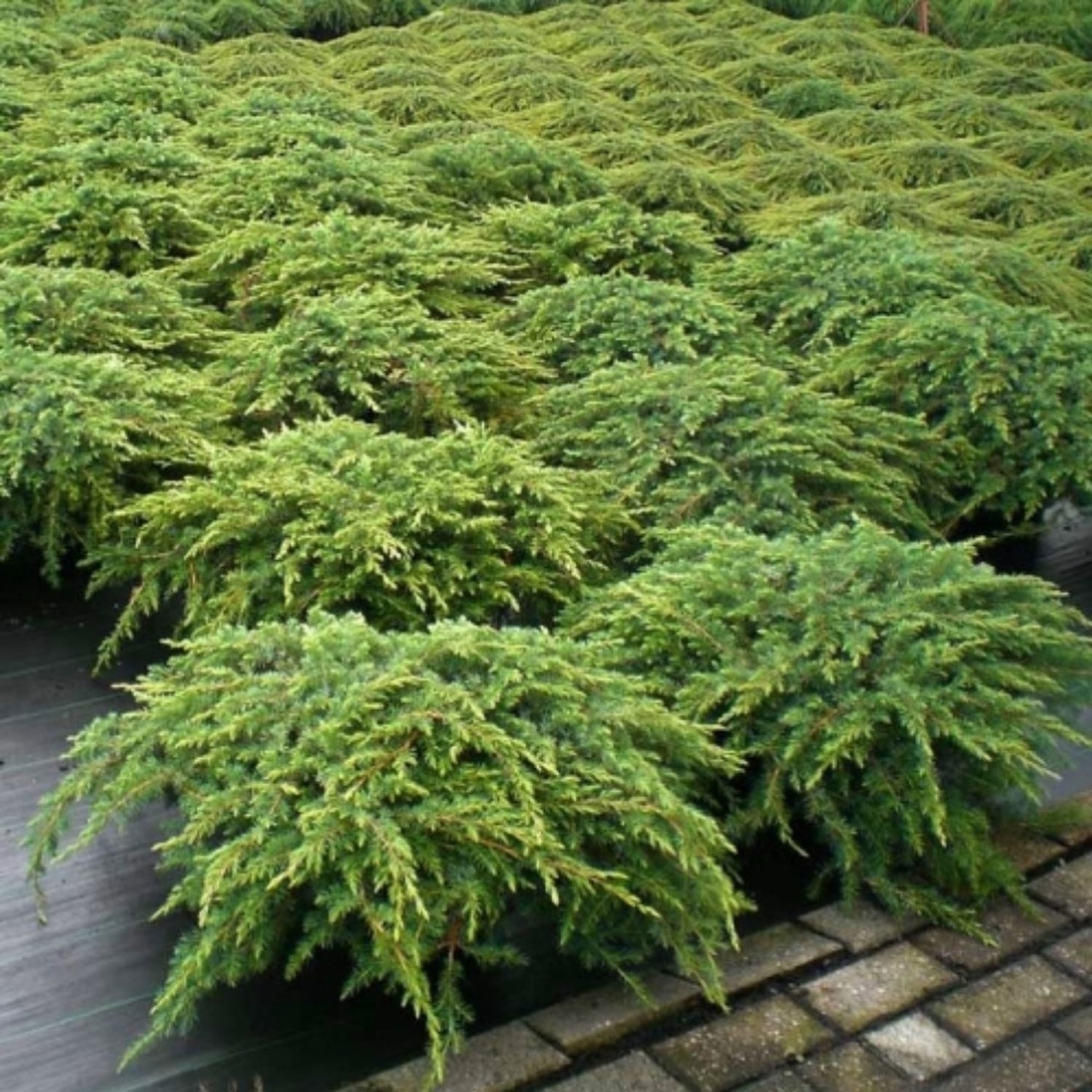
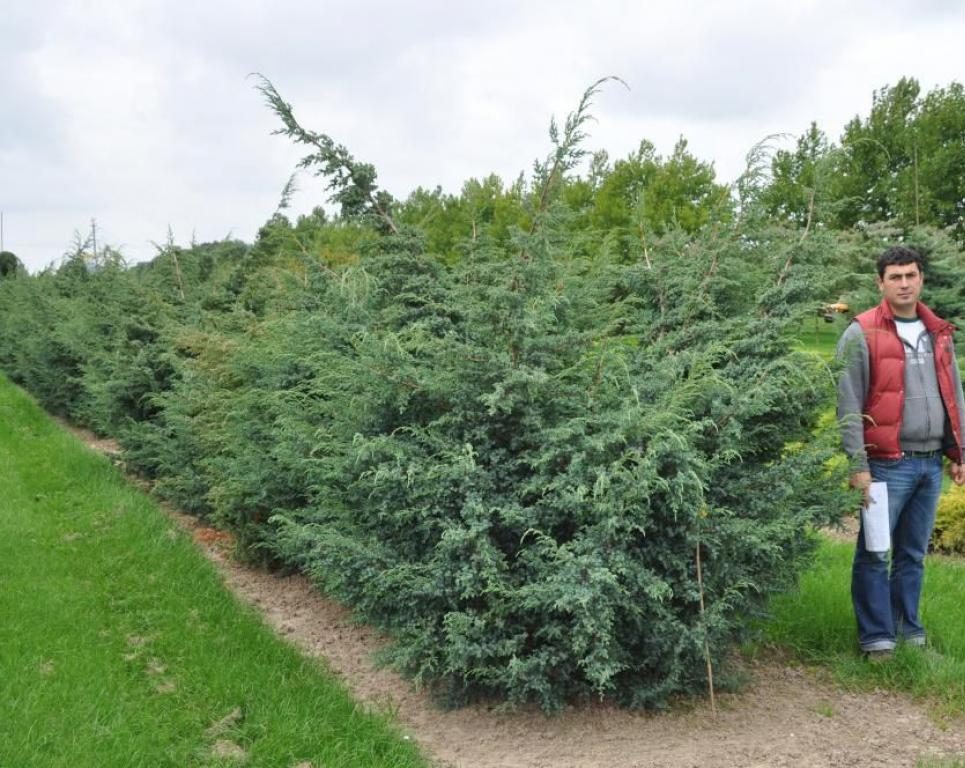
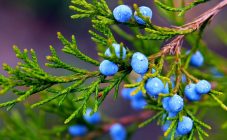
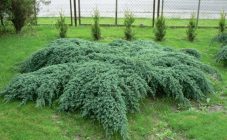
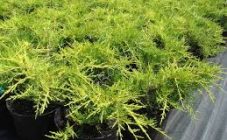
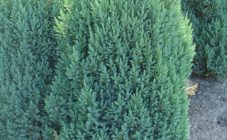
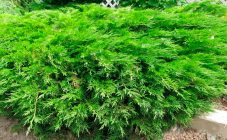
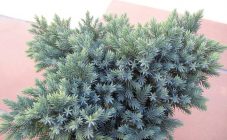







"The tree-like thuja grows rapidly, sometimes reaching a height of 70 m with a girth of 6 m in diameter." Seriously? Thuja as tall as a penthouse? Author, be careful when copying and pasting an article and keep track of where you need centimeters and where you need meters.